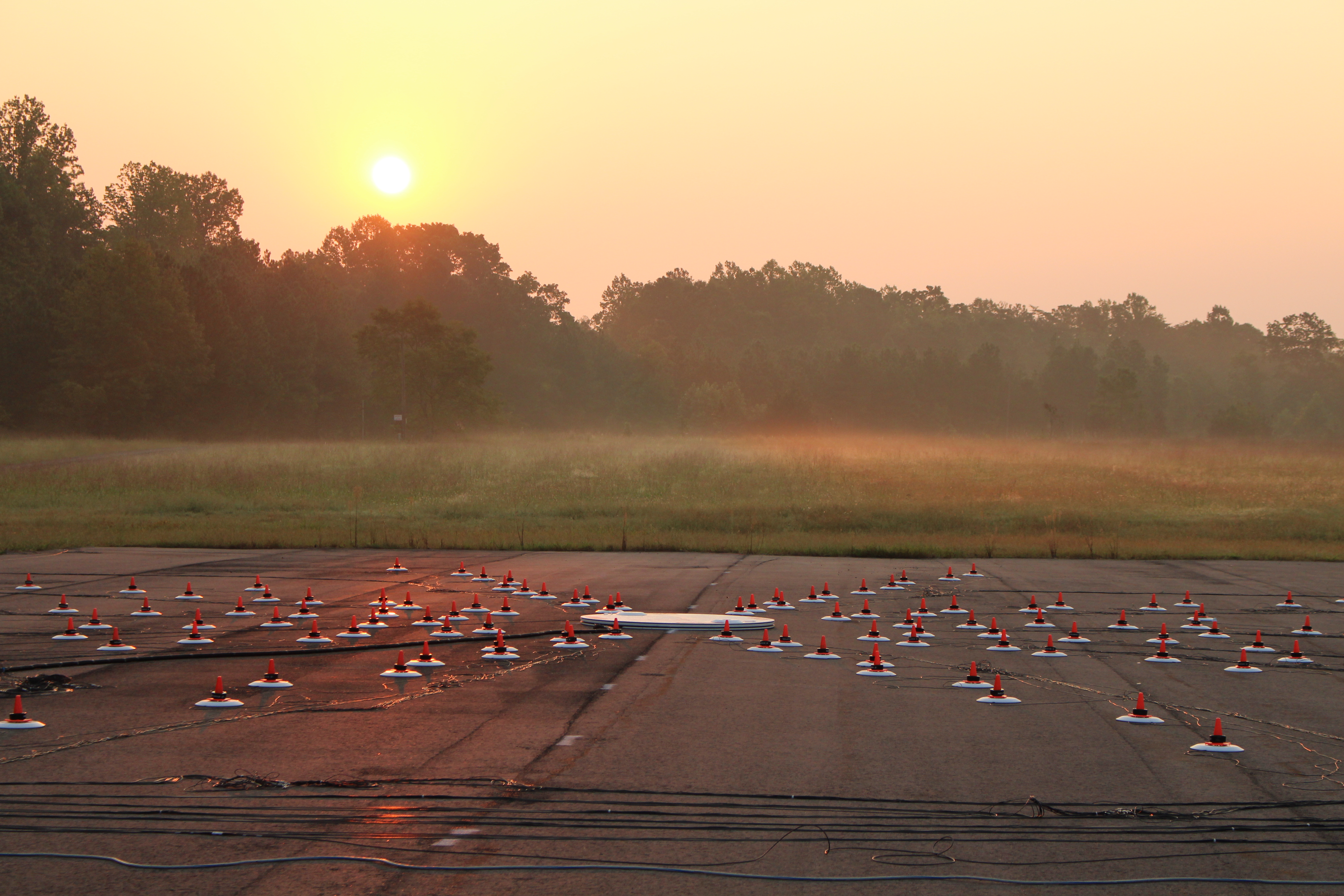The Marshall Star for September 11, 2024
Starship Super Heavy Breezes Through Wind Tunnel Testing NASA and its industry partners continue to make progress toward Artemis III and beyond, the first crewed lunar landing missions under the agency’s Artemis campaign. SpaceX, the commercial Human Landing System (HLS) provider for Artemis III and Artemis IV, recently tested a 1.2% scale model of the Super Heavy […]
The Marshall Star for September 11, 2024
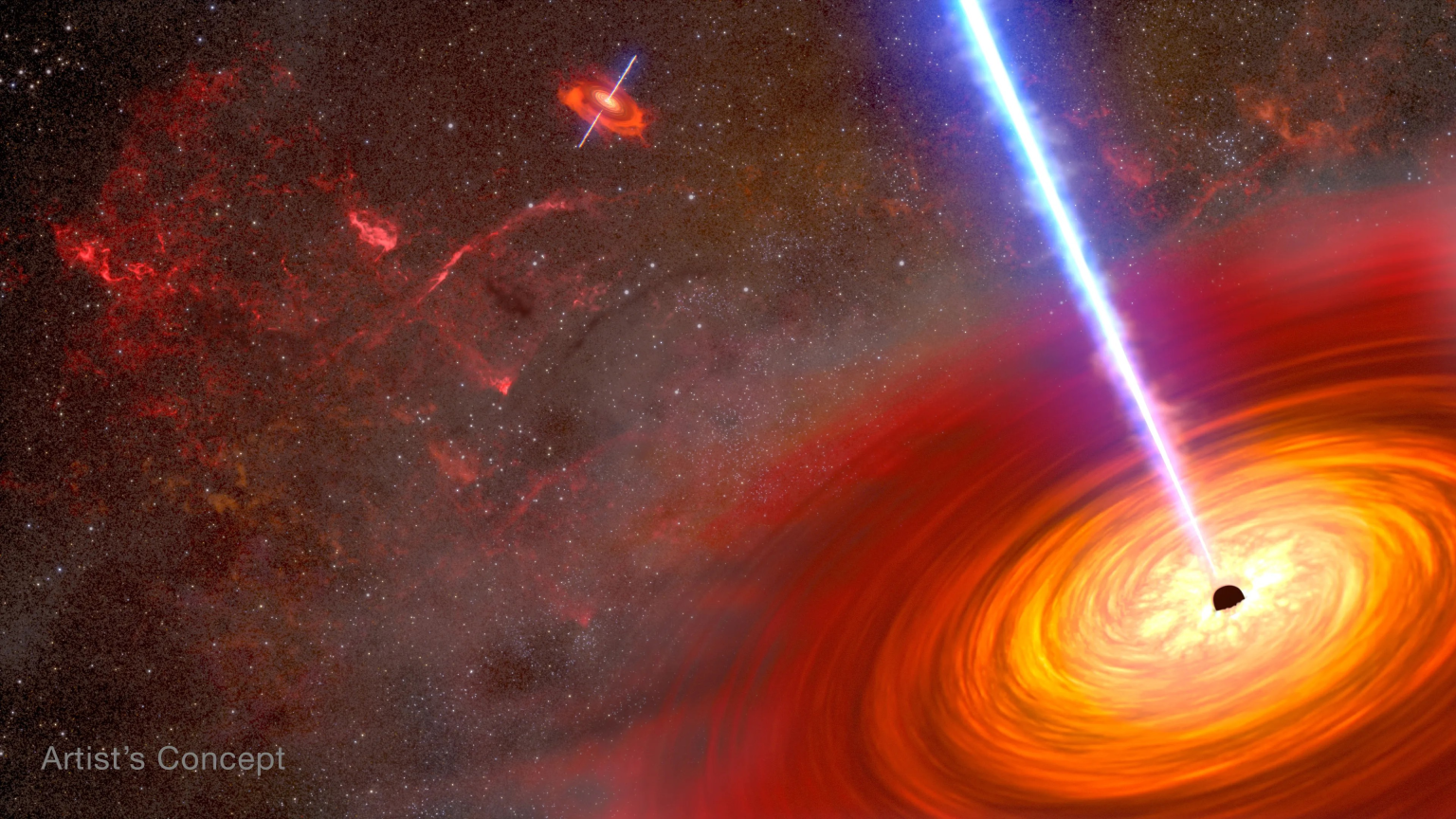
Starship Super Heavy Breezes Through Wind Tunnel Testing
NASA and its industry partners continue to make progress toward Artemis III and beyond, the first crewed lunar landing missions under the agency’s Artemis campaign. SpaceX, the commercial Human Landing System (HLS) provider for Artemis III and Artemis IV, recently tested a 1.2% scale model of the Super Heavy rocket, or booster, in the transonic Unitary Plan Wind Tunnel at NASA’s Ames Research Center. The Super Heavy rocket will launch the Starship human landing system to the Moon as part of Artemis.
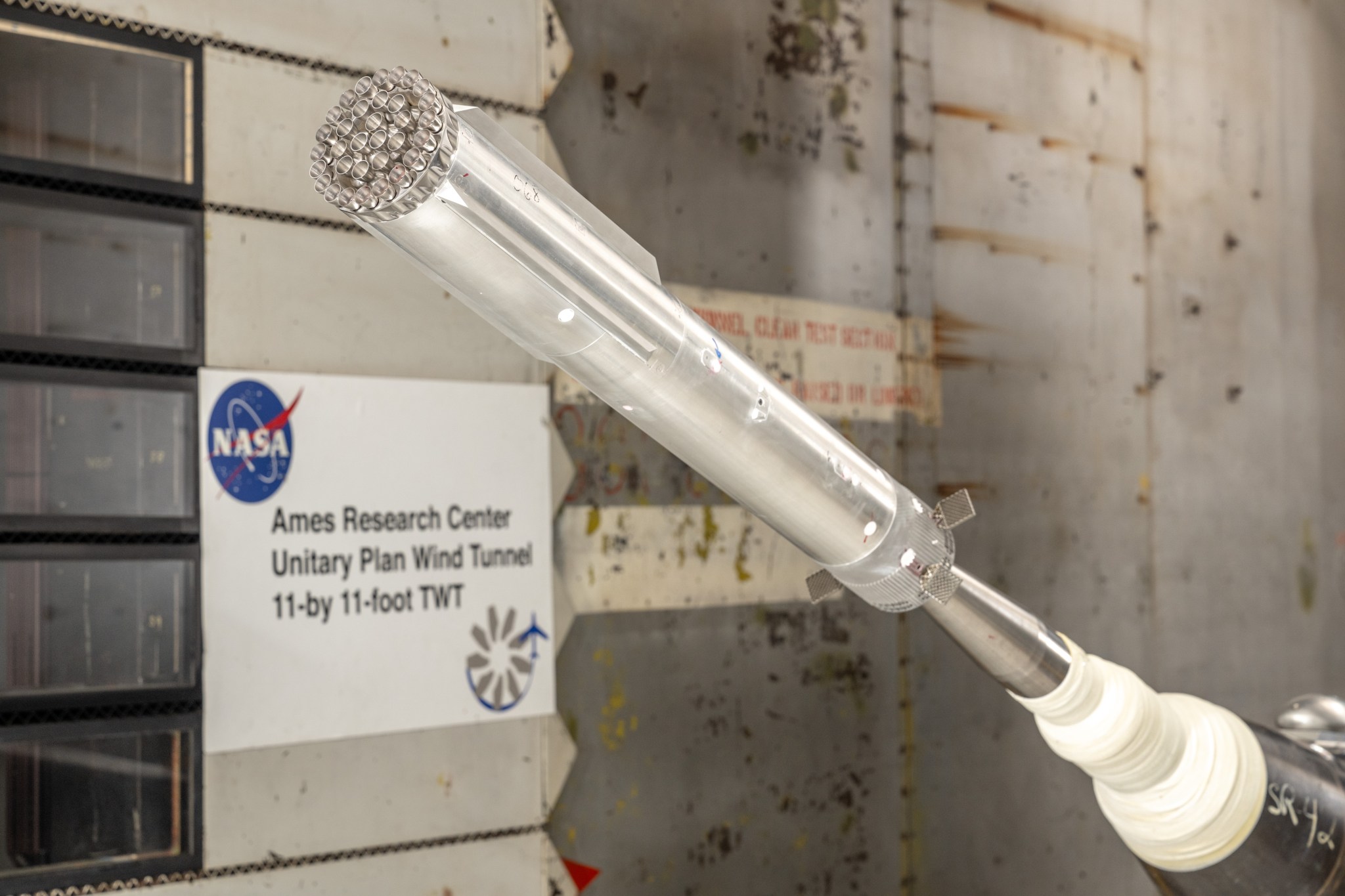
During the tests, the wind tunnel forced an air stream at the Super Heavy scale model at high speeds, mimicking the air resistance and flow the booster experiences during flight. The wind tunnel subjected the Super Heavy model, affixed with pressure-measuring sensors, to wind speeds ranging from Mach .7, or about 537 miles per hour, to Mach 1.4, or about 1,074 miles per hour. Mach 1 is the speed that sound waves travel, or 761 miles per hour, at sea level.
Engineers then measured how Super Heavy model responded to the simulated flight conditions, observing its stability, aerodynamic performance, and more. Engineers used the data to update flight software for flight 3 of Super Heavy and Starship and to refine the exterior design of future versions of the booster. The testing lasted about two weeks and took place earlier in 2024.
After Super Heavy completes its ascent and separation from Starship HLS on its journey to the Moon, SpaceX plans to have the booster return to the launch site for catch and reuse. The Starship HLS will continue on a trajectory to the Moon.
To get to the Moon for the Artemis missions, astronauts will launch in NASA’s Orion spacecraft aboard the SLS (Space Launch System) rocket from the agency’s Kennedy Space Center. Once in lunar orbit, Orion will dock with the Starship HLS or with Gateway. Once the spacecraft are docked, the astronauts will move from Orion or Gateway to the Starship HLS, which will bring them to the surface of the Moon. After surface activities are complete, Starship will return the astronauts to Orion or Gateway waiting in lunar orbit. The astronauts will transfer to Orion for the return trip to Earth.

With Artemis, NASA will explore more of the Moon than ever before, learn how to live and work away from home, and prepare for future human exploration of the Red Planet. NASA’s SLS, exploration ground systems, and Orion spacecraft, along with the human landing system, next-generation spacesuits, Gateway lunar space station, and future rovers are NASA’s foundation for deep space exploration.
NASA’s Marshall Space Flight Center manages the HLS and SLS programs.
For more information about Artemis, visit here.
NASA, Boeing Welcome Starliner Spacecraft to Earth, Close Mission
NASA and Boeing safely returned the uncrewed Starliner spacecraft following its landing at 9:01 p.m. CDT Sept. 6 at White Sands Space Harbor in New Mexico, concluding a three-month flight test to the International Space Station.
“I am extremely proud of the work our collective team put into this entire flight test, and we are pleased to see Starliner’s safe return,” said Ken Bowersox, associate administrator, Space Operations Mission Directorate at NASA Headquarters. “Even though it was necessary to return the spacecraft uncrewed, NASA and Boeing learned an incredible amount about Starliner in the most extreme environment possible. NASA looks forward to our continued work with the Boeing team to proceed toward certification of Starliner for crew rotation missions to the space station.”
The flight on June 5 was the first time astronauts launched aboard the Starliner. It was the third orbital flight of the spacecraft, and its second return from the orbiting laboratory. Starliner now will ship to NASA’s Kennedy Space Center for inspection and processing.
NASA’s Commercial Crew Program requires a spacecraft to fly a crewed test flight to prove the system is ready for regular flights to and from the orbiting laboratory. Following Starliner’s return, the agency will review all mission-related data.
“We are excited to have Starliner home safely. This was an important test flight for NASA in setting us up for future missions on the Starliner system,” said Steve Stich, manager of NASA’s Commercial Crew Program. “There was a lot of valuable learning that will enable our long-term success. I want to commend the entire team for their hard work and dedication over the past three months.”
NASA astronauts Butch Wilmore and Suni Williams launched June 5 aboard Starliner for the agency’s Boeing Crewed Flight Test from Cape Canaveral Space Force Station. On June 6, as Starliner approached the space station, NASA and Boeing identified helium leaks and experienced issues with the spacecraft’s reaction control thrusters. Following weeks of in-space and ground testing, technical interchange meetings, and agency reviews, NASA made the decision to prioritize safety and return Starliner without its crew. Wilmore and Williams will continue their work aboard station as part of the Expedition 71/72 crew, returning in February 2025 with the agency’s SpaceX Crew-9 mission.
The crew flight test is part of NASA’s Commercial Crew Program. The goal of NASA’s Commercial Crew Program is safe, reliable, and cost-effective transportation to and from the International Space Station and low Earth orbit. This already is providing additional research time and has increased the opportunity for discovery aboard humanity’s microgravity testbed, including helping NASA prepare for human exploration of the Moon and Mars.
Artemis IV: Gateway Gadget Fuels Deep Space Dining
NASA engineers are working hard to ensure no astronaut goes hungry on the Artemis IV mission.
When international teams of astronauts live on Gateway, humanity’s first space station to orbit the Moon, they’ll need innovative gadgets like the Mini Potable Water Dispenser. Vaguely resembling a toy water soaker, it manually dispenses water for hygiene bags, to rehydrate food, or simply to drink. It is designed to be compact, lightweight, portable and manual, making it ideal for Gateway’s relatively small size and remote location compared to the International Space Station closer to Earth.
The team at NASA’s Marshall Space Flight Center leading the development of the dispenser understands that when it comes to deep space cuisine, the food astronauts eat is so much more than just fuel to keep them alive.
“Food doesn’t just provide body nourishment but also soul nourishment,” said Shaun Glasgow, project manager at Marshall. “So ultimately this device will help provide that little piece of soul nourishment. After a long day, the crew can float back and enjoy some pasta or scrambled eggs, a small sense of normalcy in a place far from home.”
As NASA continues to innovate and push the boundaries of deep space exploration, devices like the compact, lightweight dispenser demonstrate a blend of practicality and ingenuity that will help humanity chart its path to the Moon, Mars, and beyond.
NASA to host International Observe the Moon Night 2024
The public is invited to join fellow sky-watchers Sept. 14 for International Observe the Moon Night – a worldwide public event encouraging observation, appreciation, and understanding of the Moon and its connection to NASA exploration and discovery. This celebration of the Moon has been held annually since 2010, and this year NASA’s Planetary Missions Program Office will host an event at the U.S. Space & Rocket Center in Huntsville. The Planetary Missions Program Office is located at NASA’s Marshall Space Flight Center.
The free event will be from 5:30 to 8 p.m. CDT at the Davidson Center at the rocket center. Attractions will include hands-on STEM activities, telescope viewing from the Von Braun Astronomical Society, music, face painting, a photo booth, a science trivia show, and much more.
Headline entertainment will be provided by the Science Wizard, David Hagerman. The Science Wizard has appeared on national television and will perform two different science-based stage shows at the event.
It’s the perfect time to universally celebrate the Moon as excitement grows about NASA returning to our nearest celestial neighbor with the Artemis missions. Artemis will land the first woman and first person of color on the Moon, using innovative technologies to explore areas of the lunar surface that have never been discovered before.
Learn more and find other events here. Happy International Observe the Moon Night!
New Hardware for Future Artemis Moon Missions Arrives at Kennedy
From across the Atlantic Ocean and through the Gulf of Mexico, two ships converged, delivering key spacecraft and rocket components of NASA’s Artemis campaign to the agency’s Kennedy Space Center.
On Sept. 3, ESA (European Space Agency) marked a milestone in the Artemis III mission as its European-built service module for NASA’s Orion spacecraft completed a transatlantic journey from Bremen, Germany, to Port Canaveral, Florida, where technicians moved it to nearby Kennedy. Transported aboard the Canopée cargo ship, the European Service Module – assembled by Airbus with components from 10 European countries and the U.S. – provides propulsion, thermal control, electrical power, and water and oxygen for its crews.
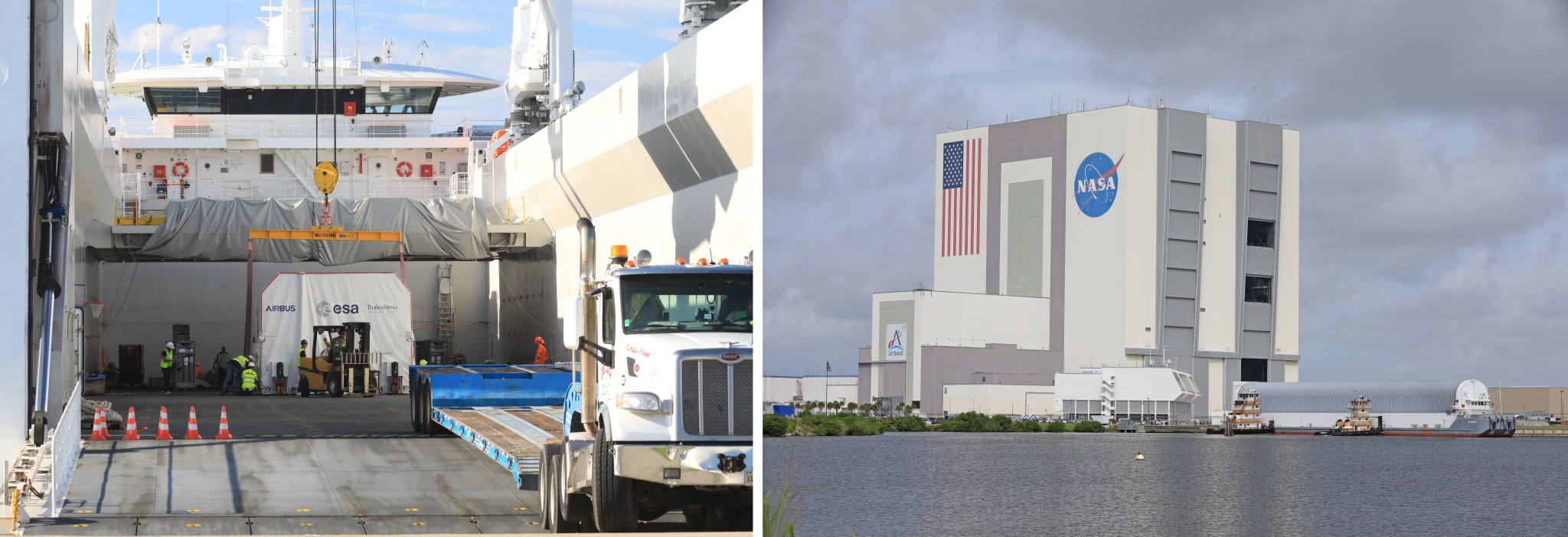
“Seeing multi-mission hardware arrive at the same time demonstrates the progress we are making on our Artemis missions,” said Amit Kshatriya, deputy associate administrator, Moon to Mars Program, at NASA Headquarters. “We are going to the Moon together with our industry and international partners and we are manufacturing, assembling, building, and integrating elements for Artemis flights.”
NASA’s Pegasus barge, the agency’s waterway workhorse for transporting large hardware by sea, ferried multi-mission hardware for the agency’s SLS (Space Launch System) rocket, the Artemis II launch vehicle stage adapter, the “boat-tail” of the core stage for Artemis III, the core stage engine section for Artemis IV, along with ground support equipment needed to move and assemble the large components. The barge pulled into NASA Kennedy’s Launch Complex 39B Turn Basin on Sept. 5.
The spacecraft factory inside Kennedy’s Neil Armstrong Operations and Checkout Building is set to buzz with additional activity in the coming months. With the Artemis II Orion crew and service modules stacked together and undergoing testing, and engineers outfitting the Artemis III and IV crew modules, engineers soon will connect the newly arrived European Service Module to the crew module adapter, which houses electronic equipment for communications, power, and control, and includes an umbilical connector that bridges the electrical, data, and fluid systems between the crew and service modules.
The SLS rocket’s cone-shaped launch vehicle stage adapter connects the core stage to the upper stage and protects the rocket’s flight computers, avionics, and electrical devices in the upper stage system during launch and ascent. The adapter will be taken to Kennedy’s Vehicle Assembly Building in preparation for Artemis II rocket stacking operations.
The boat-tail, which will be used during the assembly of the SLS core stage for Artemis III, is a fairing-like structure that protects the bottom end of the core stage and RS-25 engines. This hardware, picked up at NASA’s Michoud Assembly Facility, will join the Artemis III core stage engine section housed in the spaceport’s Space Systems Processing Facility.
The Artemis IV SLS core stage engine section arrived from Michoud and also will transfer to the center’s processing facility ahead of final assembly.
Pegasus also transported the launch vehicle stage adapter for Artemis II, which was moved onto the barge at NASA’s Marshall Space Flight Center on Aug. 21.
Under the Artemis campaign, NASA will land the first woman, first person of color, and its first international partner astronaut on the lunar surface, establishing long-term exploration for scientific discovery and preparing for human missions to Mars. The agency’s SLS rocket and Orion spacecraft, and supporting ground systems, along with the human landing system, next-generation spacesuits and rovers, and Gateway, serve as NASA’s foundation for deep space exploration.
Hubble, Chandra Find Supermassive Black Hole Duo
Like two Sumo wrestlers squaring off, the closest confirmed pair of supermassive black holes have been observed in tight proximity. These are located approximately 300 light-years apart and were detected using NASA’s Hubble Space Telescope and the Chandra X-ray Observatory. These black holes, buried deep within a pair of colliding galaxies, are fueled by infalling gas and dust, causing them to shine brightly as active galactic nuclei (AGN).
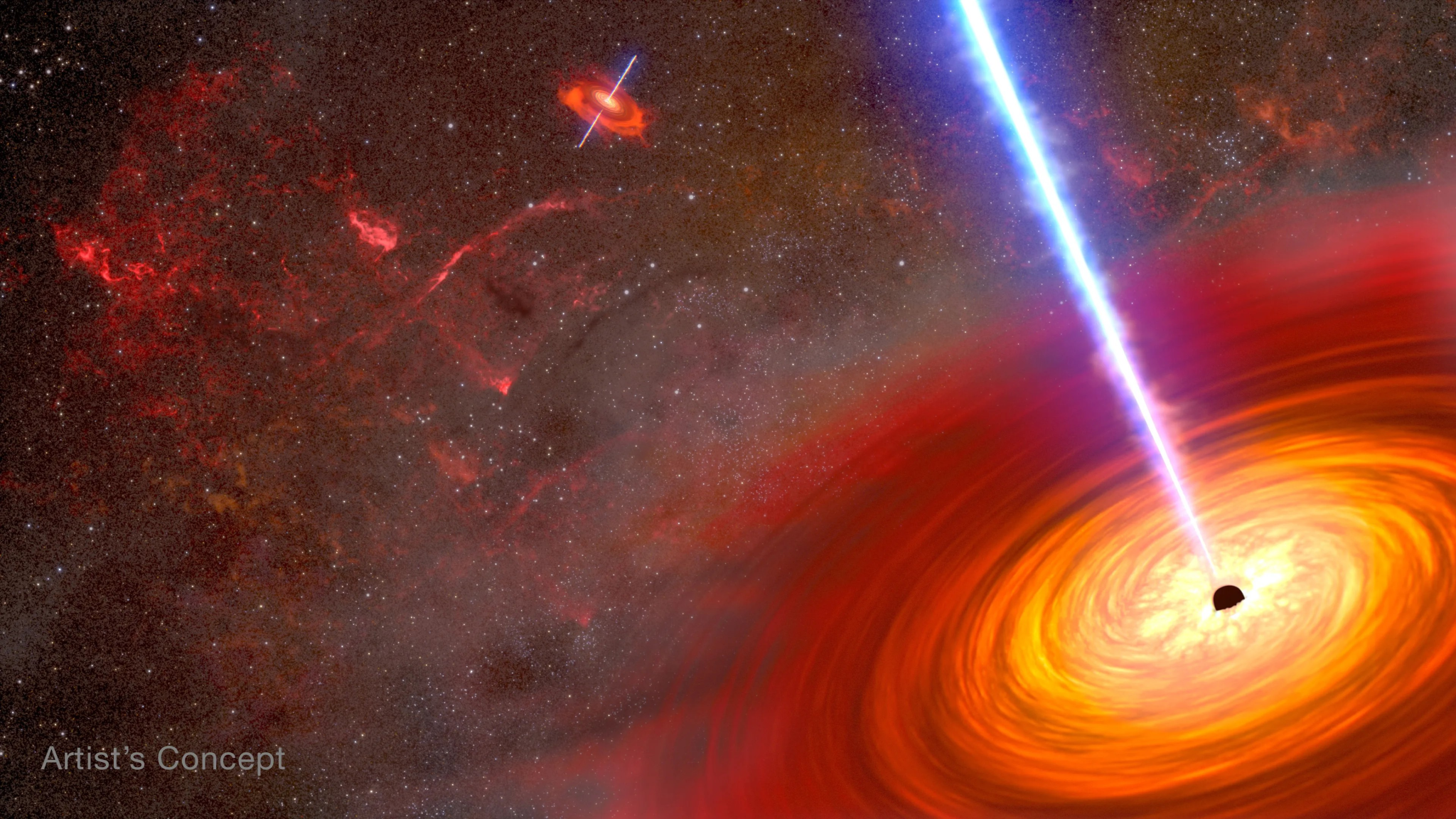
This AGN pair is the closest one detected in the local universe using multiwavelength (visible and X-ray light) observations. While several dozen “dual” black holes have been found before, their separations are typically much greater than what was discovered in the gas-rich galaxy MCG-03-34-64. Astronomers using radio telescopes have observed one pair of binary black holes in even closer proximity than in MCG-03-34-64, but without confirmation in other wavelengths.
AGN binaries like this were likely more common in the early universe when galaxy mergers were more frequent. This discovery provides a unique close-up look at a nearby example, located about 800 million light-years away.
The discovery was serendipitous. Hubble’s high-resolution imaging revealed three optical diffraction spikes nested inside the host galaxy, indicating a large concentration of glowing oxygen gas within a very small area. “We were not expecting to see something like this,” said Anna Trindade Falcão of the Center for Astrophysics | Harvard & Smithsonian in Cambridge, Massachusetts, lead author of the paper published Sept. 9 in The Astrophysical Journal. “This view is not a common occurrence in the nearby universe, and told us there’s something else going on inside the galaxy.”
Diffraction spikes are imaging artifacts caused when light from a very small region in space bends around the mirror inside telescopes.
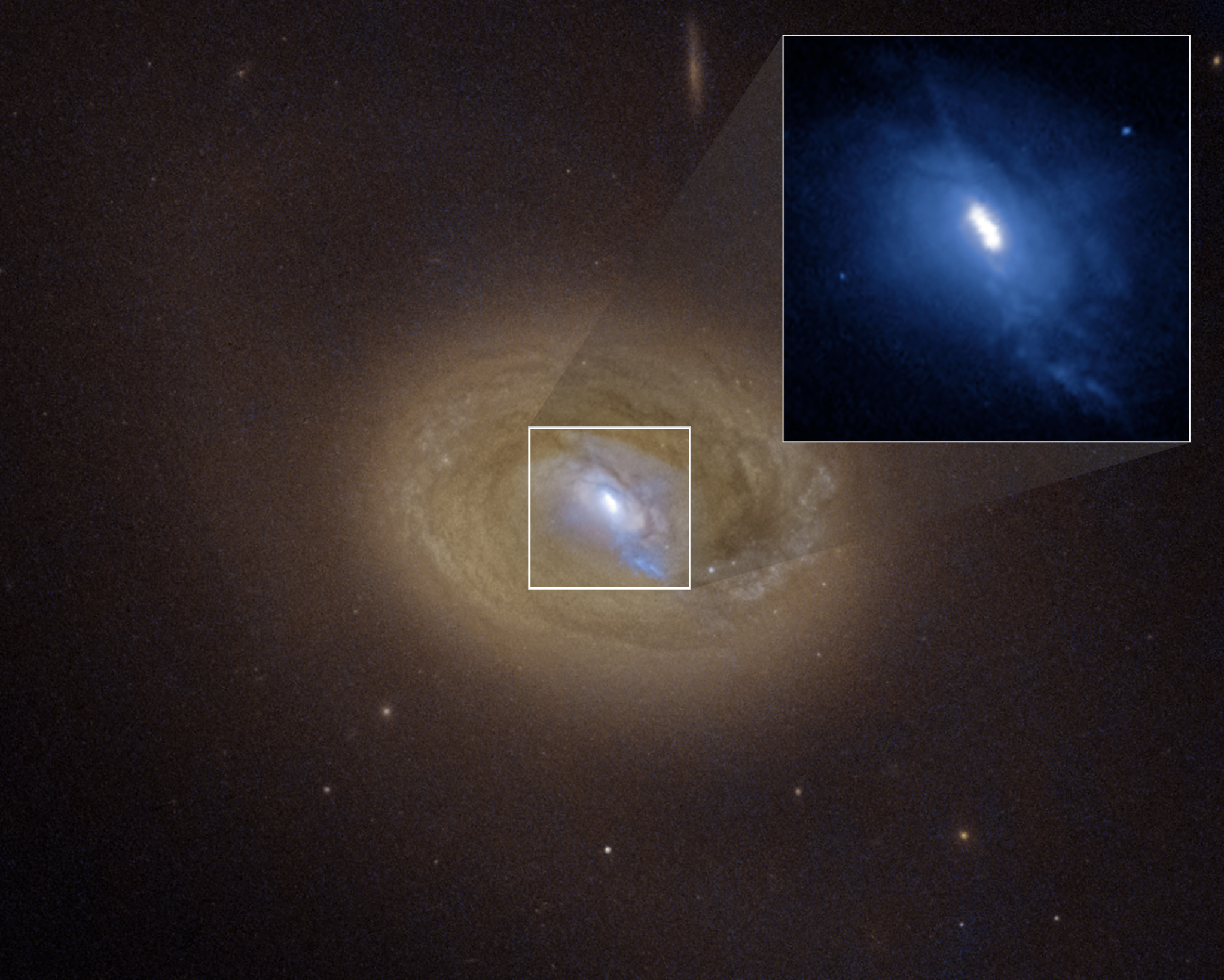
Falcão’s team then examined the same galaxy in X-rays light using the Chandra observatory to drill into what’s going on. “When we looked at MCG-03-34-64 in the X-ray band, we saw two separated, powerful sources of high-energy emission coincident with the bright optical points of light seen with Hubble. We put these pieces together and concluded that we were likely looking at two closely spaced supermassive black holes,” Falcão said.
To support their interpretation, the researchers used archival radio data from the Karl G. Jansky Very Large Array near Socorro, New Mexico. The energetic black hole duo also emits powerful radio waves. “When you see bright light in optical, X-rays, and radio wavelengths, a lot of things can be ruled out, leaving the conclusion these can only be explained as close black holes. When you put all the pieces together it gives you the picture of the AGN duo,” said Falcão.
The third source of bright light seen by Hubble is of unknown origin, and more data is needed to understand it. That might be gas that is shocked by energy from a jet of ultra high-speed plasma fired from one of the black holes, like a stream of water from a garden hose blasting into a pile of sand.
“We wouldn’t be able to see all of these intricacies without Hubble’s amazing resolution,” Falcão said.
The two supermassive black holes were once at the core of their respective host galaxies. A merger between the galaxies brought the black holes into close proximity. They will continue to spiral closer together until they eventually merge – in perhaps 100 million years – rattling the fabric of space and time as gravitational waves.
The National Science Foundation’s Laser Interferometer Gravitational-Wave Observatory (LIGO) has detected gravitational waves from dozens of mergers between stellar-mass black holes. But the longer wavelengths resulting from a supermassive black hole merger are beyond LIGO’s capabilities. The next-generation gravitational wave detector, called the LISA (Laser Interferometer Space Antenna) mission, will consist of three detectors in space, separated by millions of miles, to capture these longer wavelength gravitational waves from deep space. ESA (European Space Agency) is leading this mission, partnering with NASA and other participating institutions, with a planned launch in the mid-2030s.
NASA’s Marshall Space Flight Center manages the Chandra program. The Smithsonian Astrophysical Observatory’s Chandra X-ray Center controls science from Cambridge, Massachusetts and flight operations from Burlington, Massachusetts. Northrop Grumman Space Technologies in Redondo Beach, California was the prime contractor for the spacecraft.
The Hubble Space Telescope has been operating for over three decades and continues to make ground-breaking discoveries that shape our fundamental understanding of the universe. Hubble is a project of international cooperation between NASA and ESA (European Space Agency). NASA’s Goddard Space Flight Center manages the telescope and mission operations. Lockheed Martin Space, based in Denver, Colorado, also supports mission operations at Goddard. The Space Telescope Science Institute in Baltimore, Maryland, which is operated by the Association of Universities for Research in Astronomy, conducts Hubble science operations for NASA.
Betelgeuse! Betelgeuse! Betelgeuse! Stargazers Won’t See Ghosts but Supergiant Star for Spooky Season
Stargazers seeking familiar points of interest in the night sky are likely to point out Betelgeuse, the red supergiant star sometimes identified as “the shoulder of Orion.” Even some 400-600 light-years distant, it’s typically one of the brightest stars visible in the night sky, and the brightest of all in the infrared spectrum.
Fewer space enthusiasts may know that Betelgeuse’s nickname may have been mistranslated from the Arabic phrase Ibṭ al-Jauzā’ in the 13th century. Depending on the nuances of pronunciation, Betelgeuse actually might be “the armpit of Orion.”
What may come as a surprise is that the star that inspired the naming of a ghostly movie menace is doing some hurtling of its own. Betelgeuse is actually a runaway star in the process of bidding a big galactic adios to its birthplace – the hot star association that includes Orion’s Belt – and speeding away at approximately 18.6 miles per second.
That’s an awesome prospect, said Dr. Debra Wallace, deputy branch chief of Astrophysics at NASA’s Marshall Space Flight Center. Betelgeuse is a pulsating star with an uncertain distance of roughly 548 light-years and changing luminosity. We estimate its radius is approximately 724 times larger than our Sun. If it sat at the center of our solar system, it would swallow the orbits of Mercury, Venus, Earth, and Mars. Its bow shock – the “wave” generated by its passage through the interstellar medium – is roughly four light-years across.
What cosmic force caused Betelgeuse to go on the interstellar lam from its point of origin?
“Typically, stars don’t become runaways without receiving a big kick,” Wallace said. “What’s most likely is that the competing gravity of other nearby stars ejected it outward or something else blew up in its proximity. There was a change in the dynamic interactions of the star grouping, and Betelgeuse was sent packing.”
Betelgeuse is only 10 million years old, but already in the twilight of its life. Given that our own small star is nearly 5 billion years, roughly halfway through its own estimated lifespan, why is Betelgeuse expected to be here today and gone tomorrow – give or take 100,000 years?
“Think about setting a fire in your back yard,” Wallace said. “The more fuel you throw on it, the faster and hotter it burns. It’s visually impressive – but gone in a flash.”
That’s because stars ignite a powerful chain of nuclear fusion reactions to counter their own intense gravity, which is always striving to collapse the star in on itself. For supergiants such as Betelgeuse, that delicate balance requires it to burn extremely hot and bright – but that also means it consumes its fuel supply far faster than our own modest young star.
Wallace said Betelgeuse likely started its life at least 20 times the mass of Earth’s Sun. It’s been visible to us for millennia. Ancient Chinese astronomers would have identified it as a yellow star which has since evolved to the right, per the Hertzsprung-Russell stellar evolution diagram and a 2022 study of the star’s color evolution. When the Egyptian astronomer Ptolemy saw Betelgeuse some 300 years after the earliest Chinese observations, it had gone orange. Today, the star has taken on a fierce red color that makes it easy to find in the night sky.
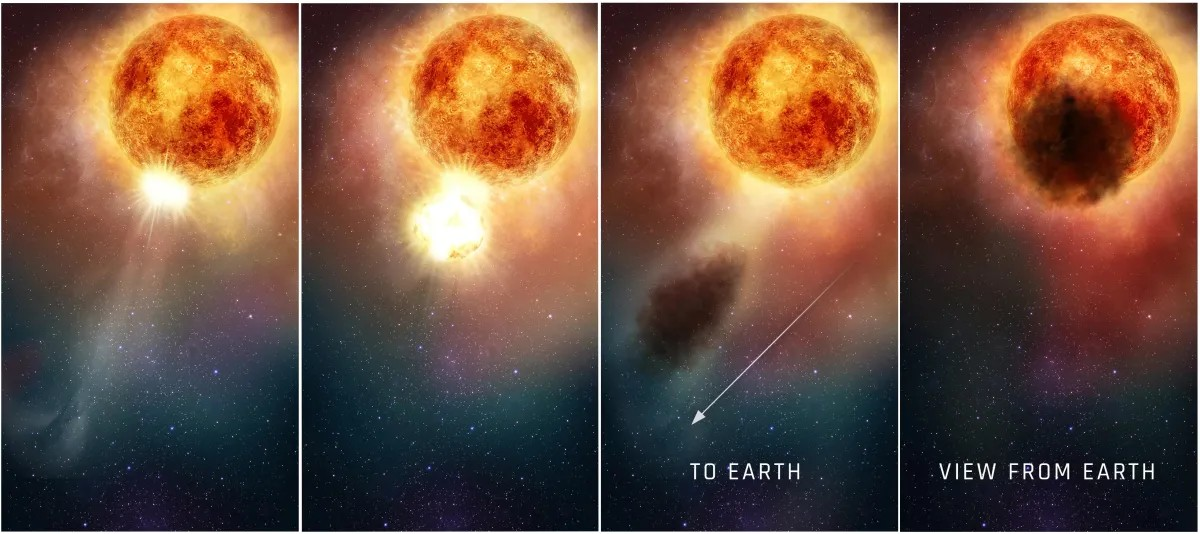
“Betelgeuse likely will burn for another 100,000 years or so, depending on its mass loss rate, then could end up a blue supergiant – like Rigel, the star that serves as Orion’s right knee – before it explodes,” Wallace said. That supernova event, she noted, will release as much energy in a split-second as our Sun generates in its entire lifetime, though Betelgeuse is far too distant to have any effect on our solar system.
Which isn’t to say the red supergiant doesn’t have any surprises left. In October 2019, Betelgeuse abruptly darkened, as much as half of its luminosity draining away in an event astronomers dubbed “the Great Dimming.”
Researchers began speculating about an early supernova, but by early 2020, Betelgeuse had brightened once more. Studies using NASA’s Hubble Space Telescope suggested a slightly less explosive cause. An upwelling of a large convection cell on Betelgeuse – perhaps in honor of its flatulent namesake – had expelled a titanic outburst of superhot plasma, yielding a dust cloud that dramatically blocked the star’s light for months.
“We’re still figuring out the mechanisms which cause massive star evolution, and the advent of new telescopes has been tremendously helpful,” Wallace said. “We’ve only realized in the last 20 or 30 years that most massive stars are products of binary evolution.”
Was Betelgeuse part of a binary star system, and did its demise – or a cataclysmic split – turn it into a runaway? Is it possible it’s still there, having merged with or still locked in a fatal dance with its fugitive partner? New studies suggest those may be possibilities, though Wallace notes that further intensive study is needed.
Will Betelgeuse ultimately go out with a bang or a whimper? Time will tell. But don’t write off the red giant just yet.
Stargazers in the Northern Hemisphere seeking to spot Betelgeuse should scan the southwestern sky. Those south of the equator should look in the northwestern sky. Find a line of three bright stars clustered together, representing Orion’s belt. Two brighter stars just to the north mark Orion’s shoulders; the very bright left one is Betelgeuse.
Learn more about Betelgeuse here.
NASA’s Mini BurstCube Mission Detects Mega Blast
The shoebox-sized BurstCube satellite has observed its first gamma-ray burst, the most powerful kind of explosion in the universe, according to a recent analysis of observations collected over the last several months.
“We’re excited to collect science data,” said Sean Semper, BurstCube’s lead engineer at NASA’s Goddard Space Flight Center. “It’s an important milestone for the team and for the many early career engineers and scientists that have been part of the mission.”
The event, called GRB 240629A, occurred June 29 in the southern constellation Microscopium. The team announced the discovery in a GCN (General Coordinates Network) circular on Aug. 29.
BurstCube deployed into orbit April 18 from the International Space Station, following a March 21 launch. The mission was designed to detect, locate, and study short gamma-ray bursts, brief flashes of high-energy light created when superdense objects like neutron stars collide. These collisions also produce heavy elements like gold and iodine, an essential ingredient for life as we know it.
BurstCube is the first CubeSat to use NASA’s TDRS (Tracking and Data Relay Satellite) system, a constellation of specialized communications spacecraft. Data relayed by TDRS (pronounced “tee-driss”) help coordinate rapid follow-up measurements by other observatories in space and on the ground through NASA’s GCN. BurstCube also regularly beams data back to Earth using the Direct to Earth system – both it and TDRS are part of NASA’s Near Space Network.
After BurstCube deployed from the space station, the team discovered that one of the two solar panels failed to fully extend. It obscures the view of the mission’s star tracker, which hinders orienting the spacecraft in a way that minimizes drag. The team originally hoped to operate BurstCube for 12-18 months, but now estimates the increased drag will cause the satellite to re-enter the atmosphere in September.
“I’m proud of how the team responded to the situation and is making the best use of the time we have in orbit,” said Jeremy Perkins, BurstCube’s principal investigator at Goddard. “Small missions like BurstCube not only provide an opportunity to do great science and test new technologies, like our mission’s gamma-ray detector, but also important learning opportunities for the up-and-coming members of the astrophysics community.”
BurstCube is led by Goddard. It’s funded by the Science Mission Directorate’s Astrophysics Division at NASA Headquarters. The BurstCube collaboration includes: the University of Alabama in Huntsville; the University of Maryland, College Park; the Universities Space Research Association in Washington; the Naval Research Laboratory in Washington; and NASA’s Marshall Space Flight Center.
What's Your Reaction?































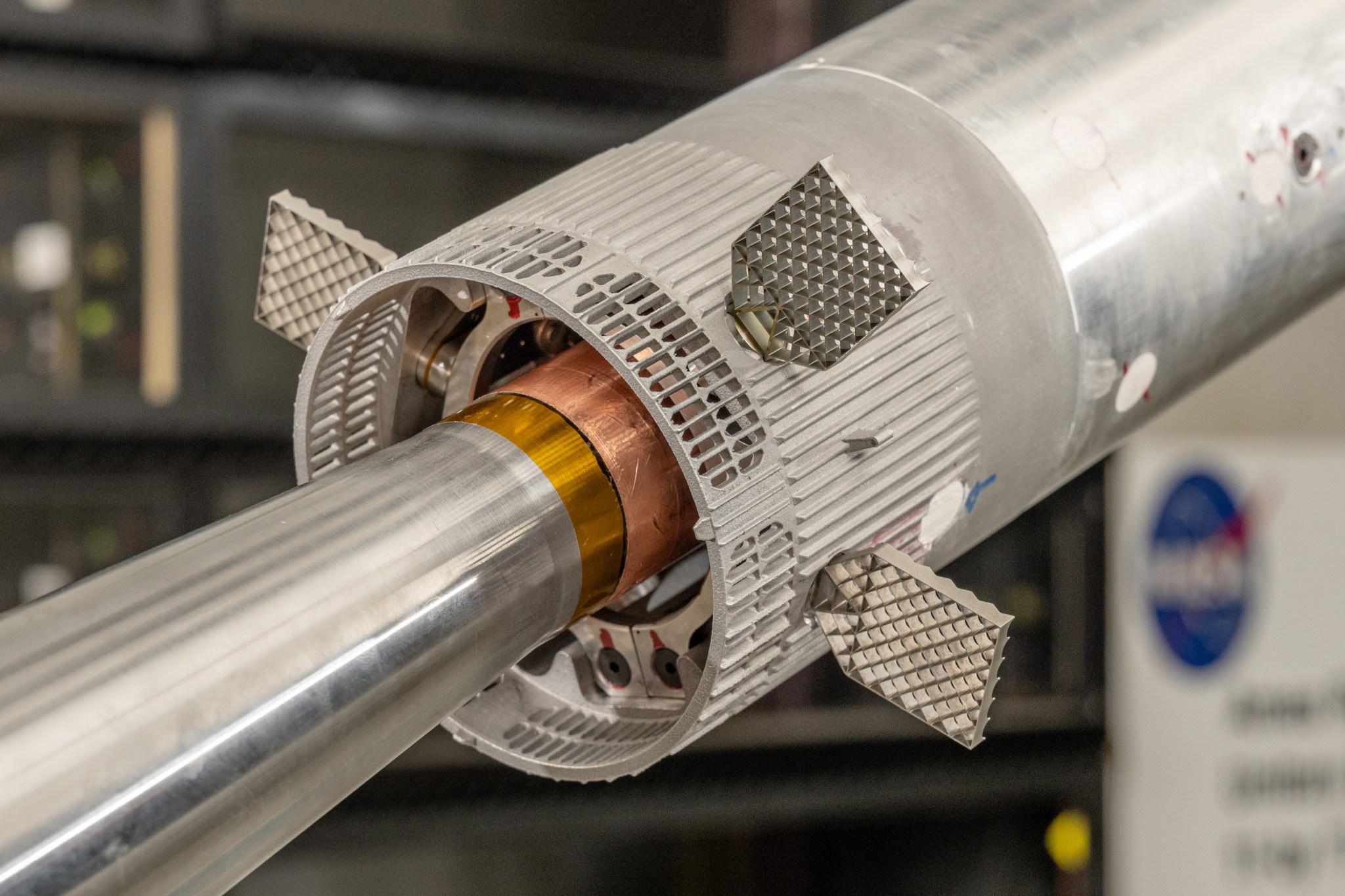
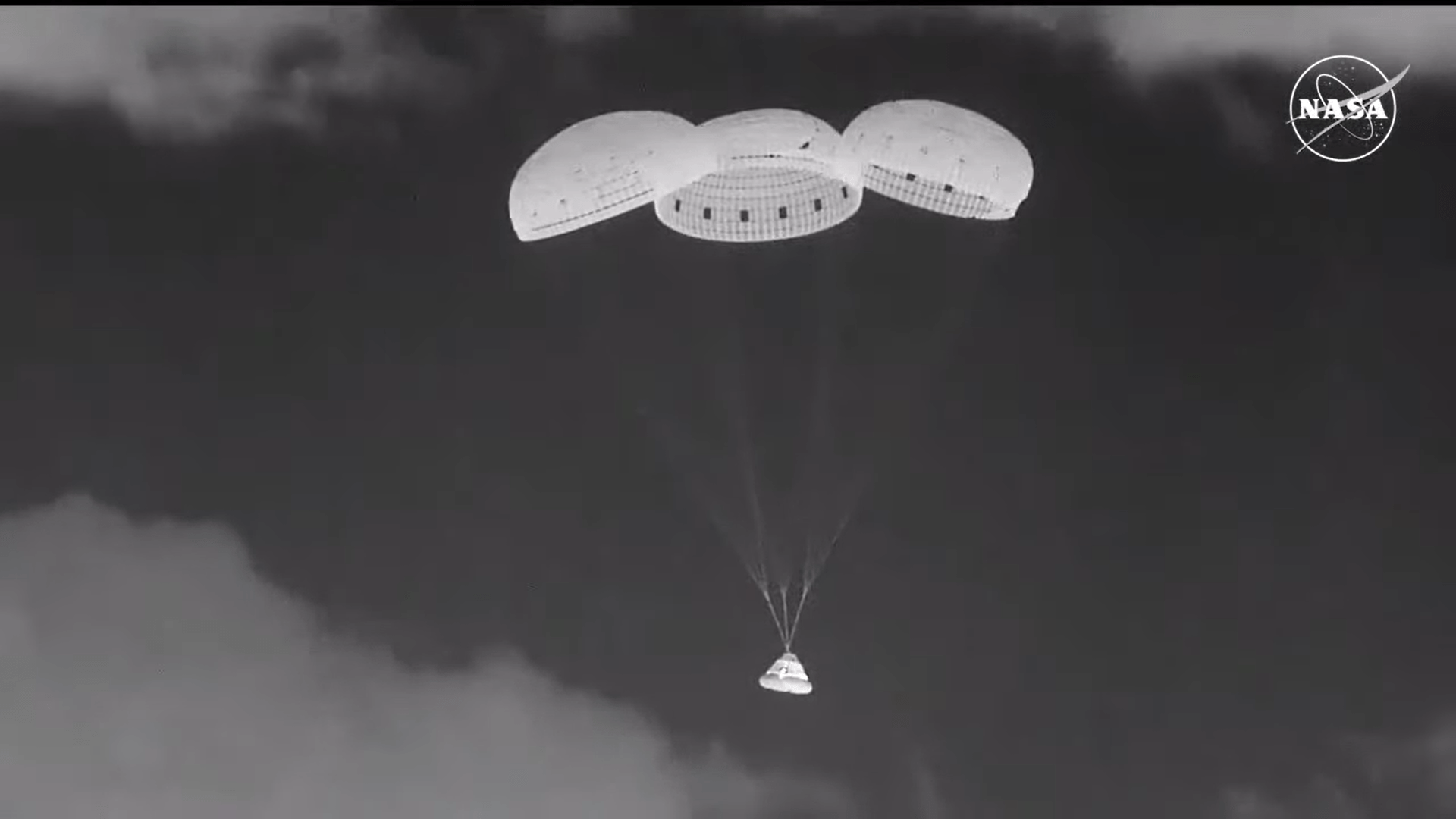
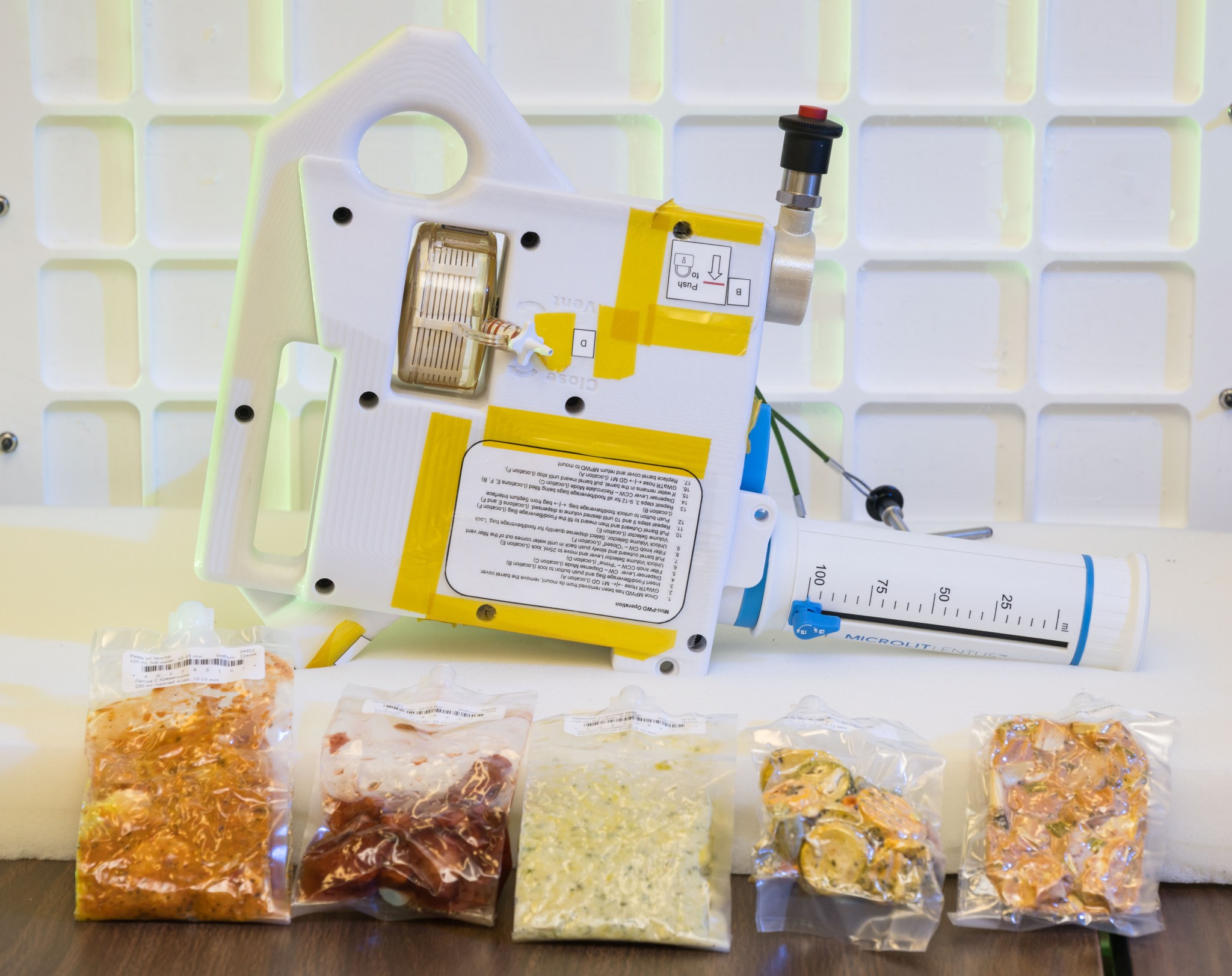
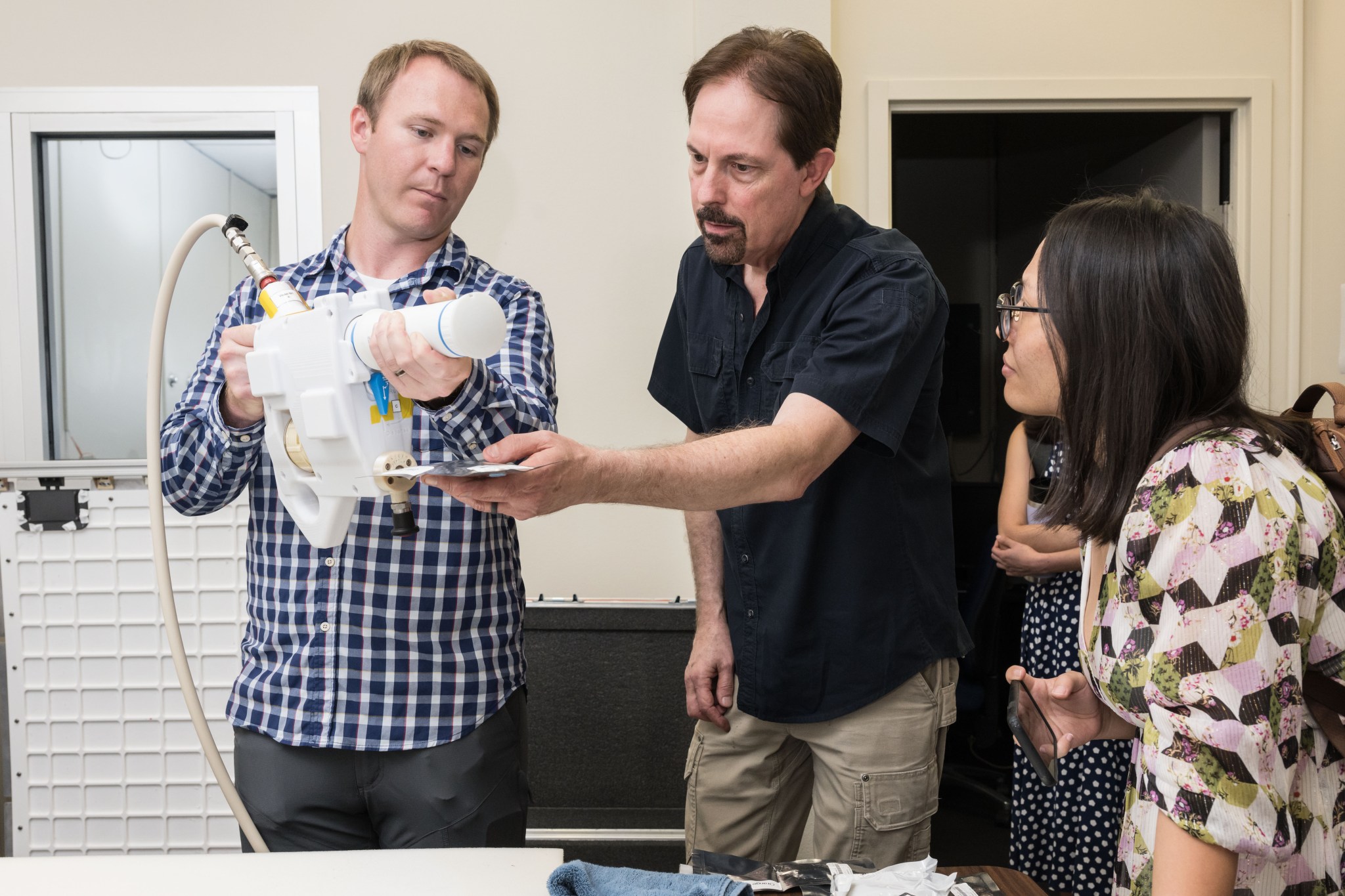
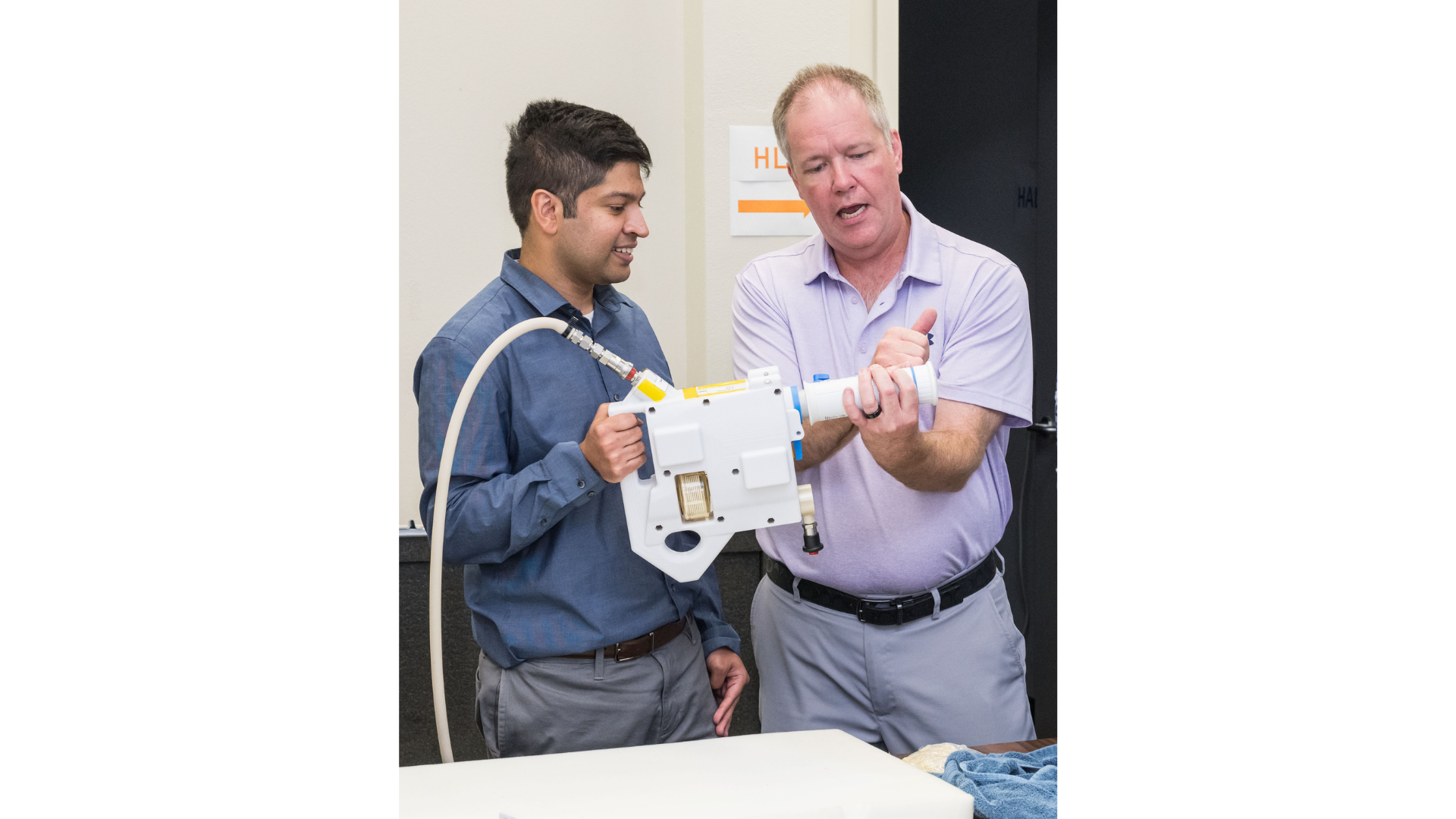
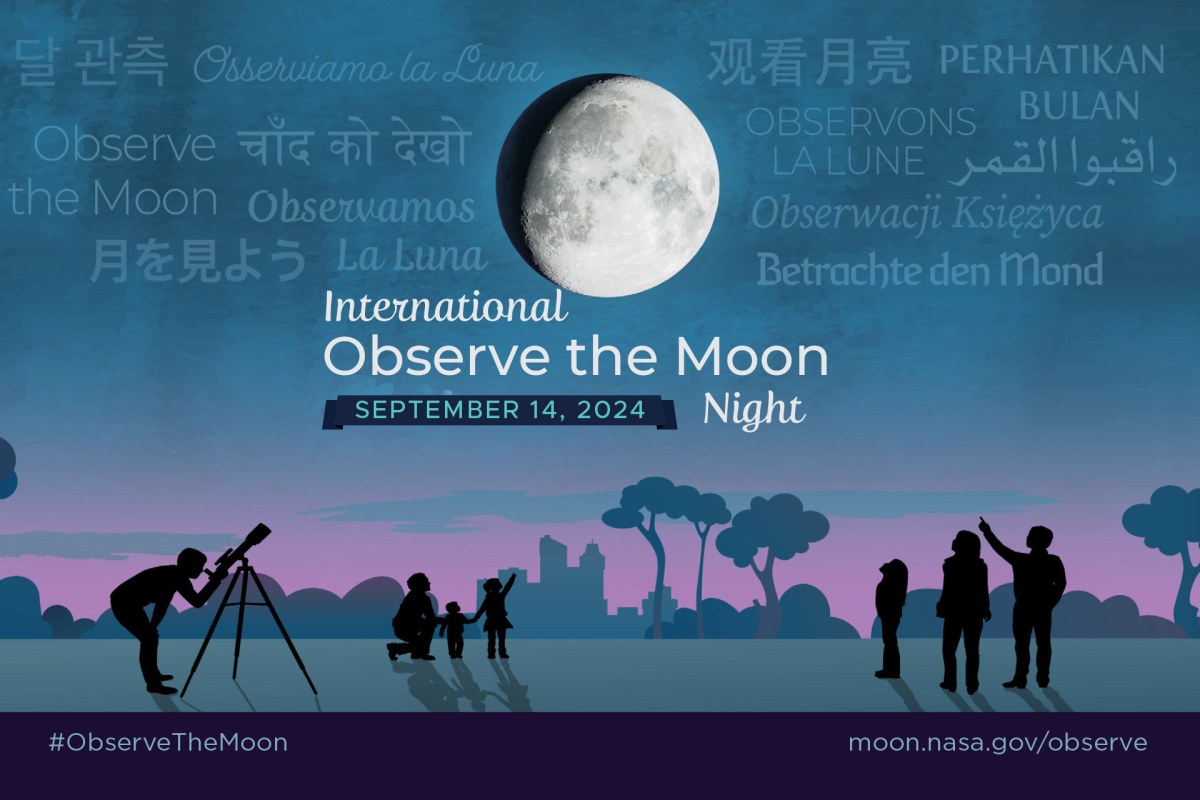
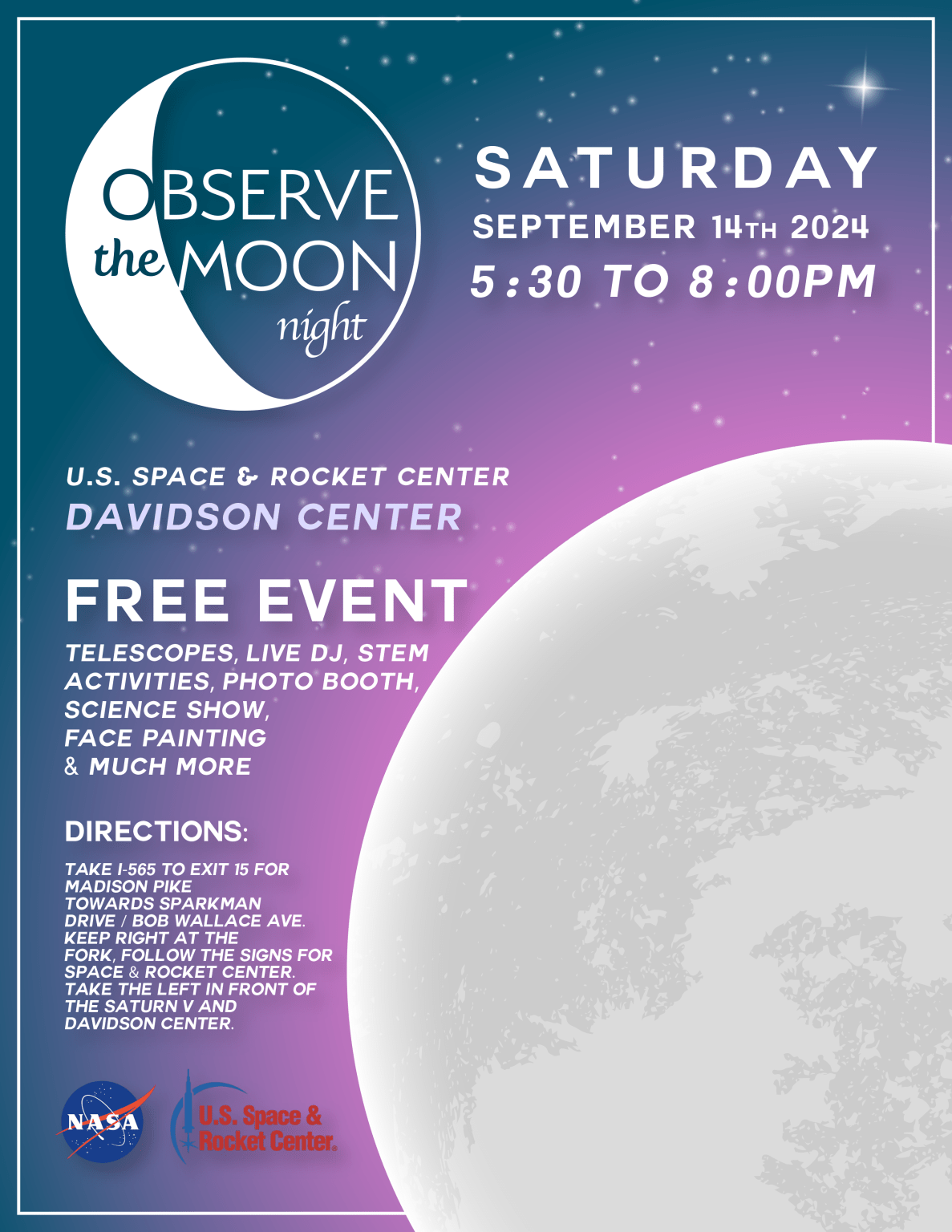
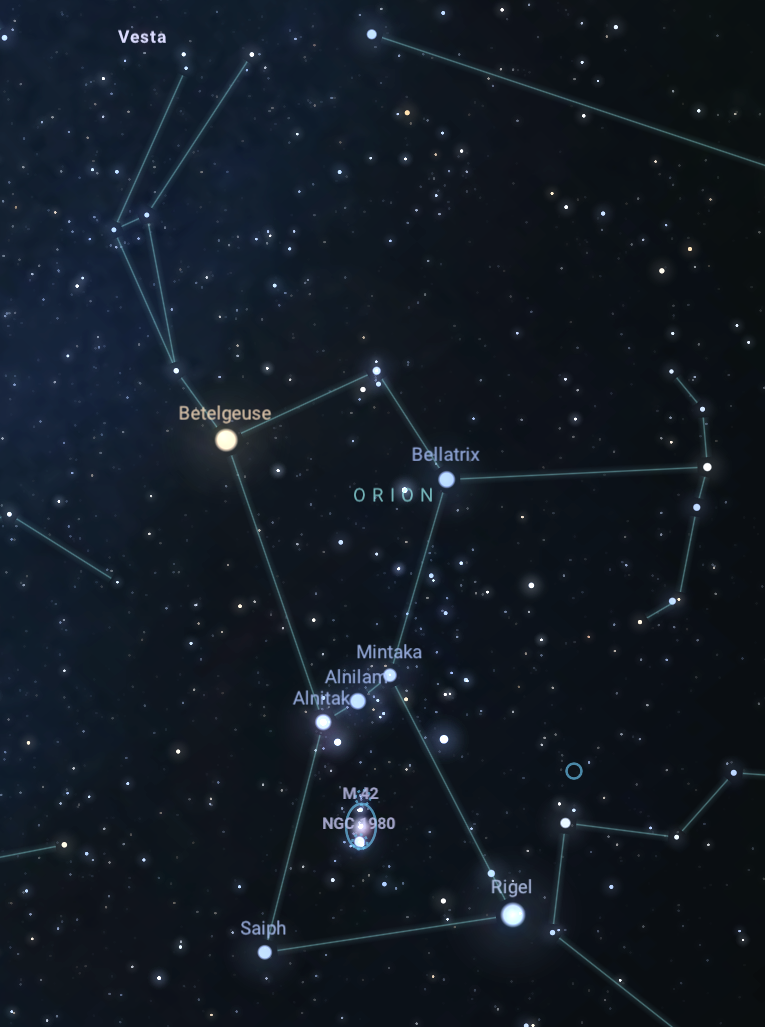
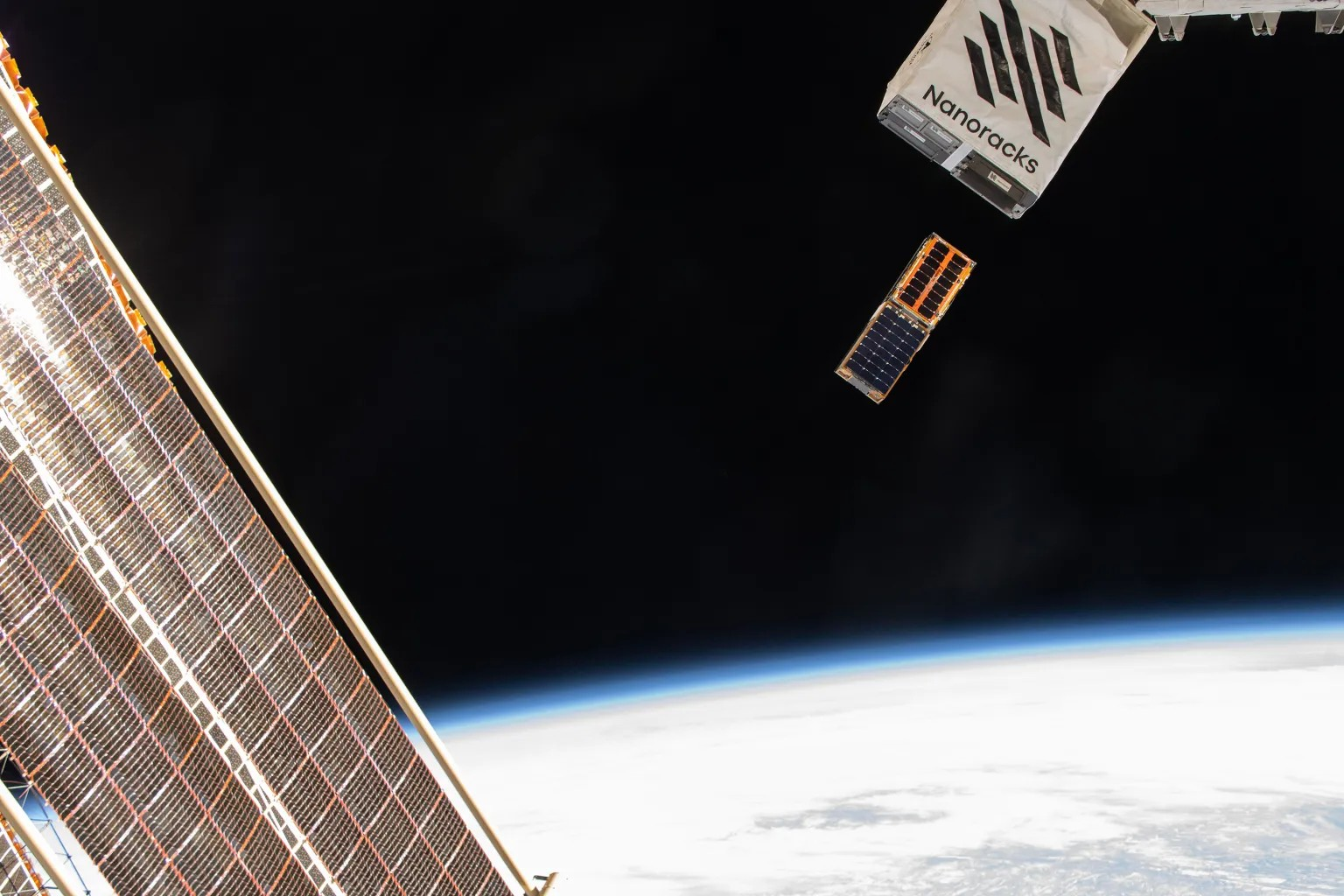

![In Memoriam: Dr. Richard S. Stolarski [1941–2024]](https://science.nasa.gov/wp-content/uploads/2024/05/stolarski.jpg?w=640)
